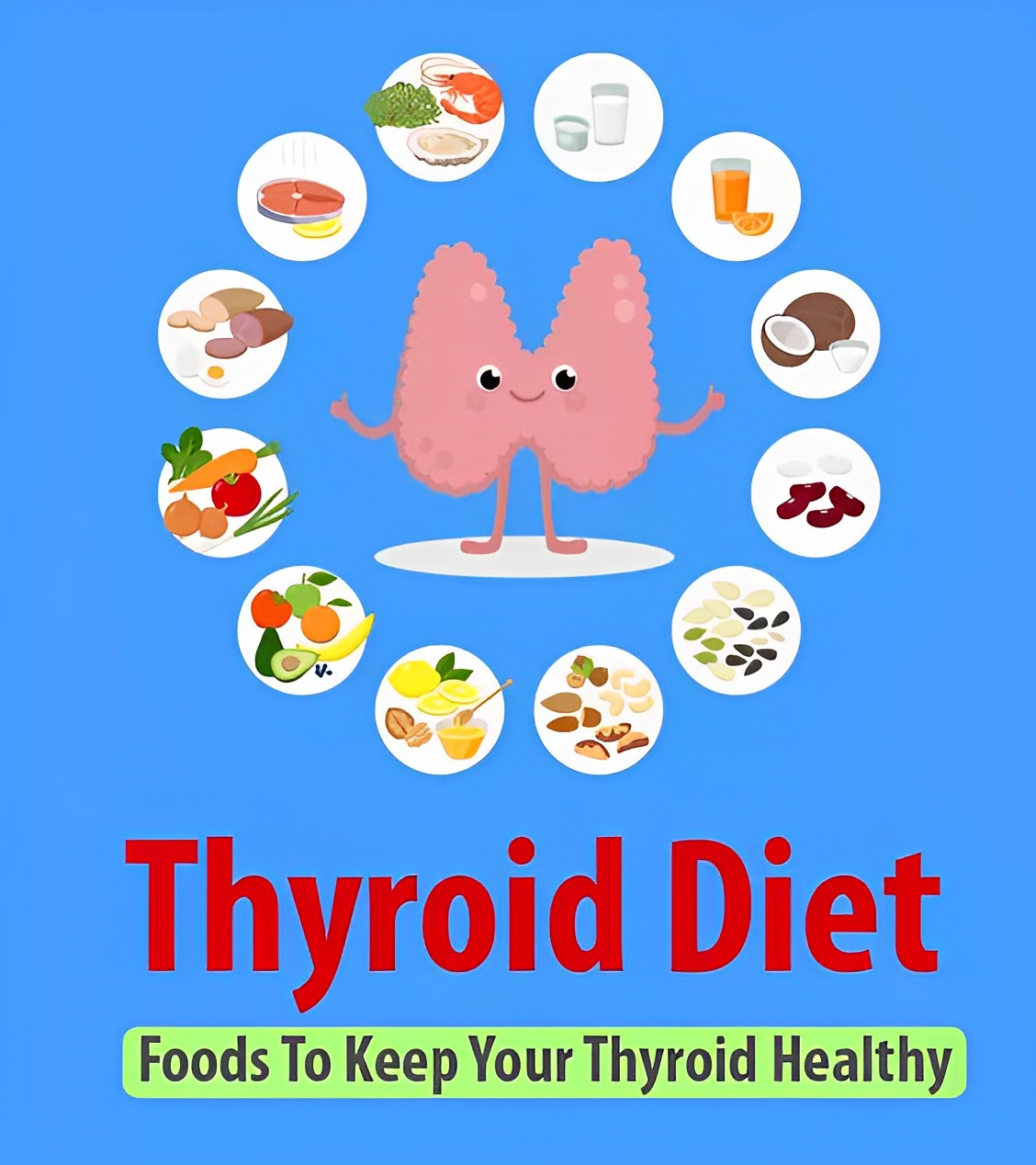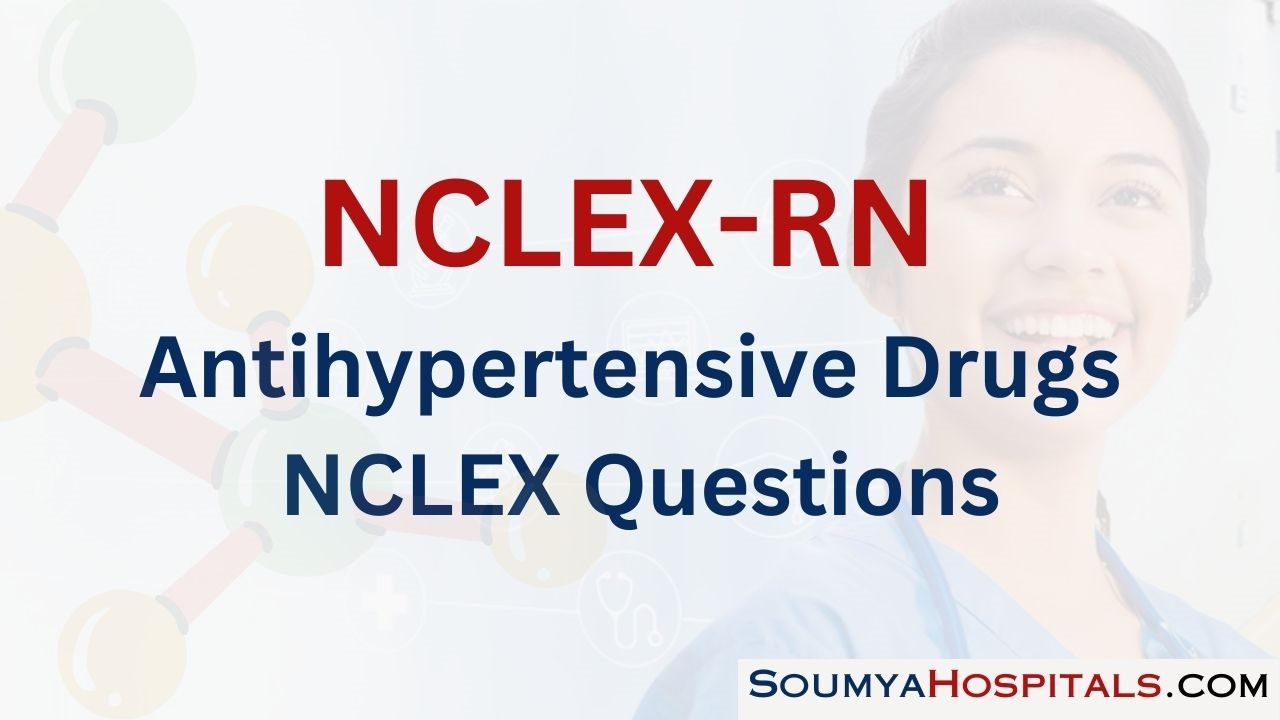Practicing with NCLEX PN Practice Questions promotes active learning and retention of nursing knowledge in long-term memory.
NCLEX Antihypertensive Drugs Questions - NCLEX Questions on Antihypertensive Drugs
Antihypertensive Drugs Medication NCLEX Practice Questions
Question 1.
A 32-year-old woman, who is 22 weeks pregnant, is diagnosed with hypertension. The healthcare provider prescribes methyldopa for treatment. The patient asks about the safety of the medication for her and the developing fetus.
Which of the following statements about methyldopa is NOT true?
(a) It is a beta blocker
(b) It has the lowest risk of harming the mother and developing fetus among all beta blockers
(c) It is used to treat hypertension in pregnancy
(d) It is not a beta blocker
Answer:
(a) It is a beta blocker
Explanation:
Option (a) is incorrect because methyldopa is not a beta blocker. Options (b), (c), and (d) are all true statements about methyldopa. Option (b) is true because methyldopa has the lowest risk of harming the mother and developing fetus among all beta blockers, making it a safe option for use in pregnancy. Option (c) is true because methyldopa is used to treat hypertension in pregnancy. Option (d) is true because methyldopa is not a beta blocker.
Rationale:
Methyldopa is not a beta blocker. It is an antihypertensive medication that works by inhibiting the synthesis and release of catecholamines in the brain, which leads to a decrease in blood pressure. It is often used to treat hypertension in pregnancy due to its low risk of harming the mother and developing fetus.
Question 2.
A 35-year-old female patient presents to the clinic with a blood pressure of 160/100 mmHg. She has a history of hypertension and has been previously prescribed propranolol, but has not been taking it regularly due to experiencing side effects such as bradycardia and bronchoconstriction. The patient is currently pregnant and is concerned about the safety of taking antihypertensive medications during pregnancy.
Which of the following is the safest antihypertensive option for a pregnant woman with hypertension?
(a) Propranolol
(b) Methyldopa
(c) Labetalol
(d) Diuretic
Answer:
(b) Methyldopa
Explanation:
The case study states that the patient has a history of hypertension and has previously been prescribed propranolol, but has experienced side effects such as bradycardia and bronchoconstriction. Propranolol must never be used concomitantly with patients with COPD, and that nursing intervention is important for informing patients about the possible bradycardia effect of beta blockers.
It also states that methyldopa has the lowest risk of harming the mother and developing fetus and is a safe option for hypertension in pregnancy, along with labetalol and diuretics. Therefore, option (b) (methyldopa) is the correct answer.
Rationale:
Methyldopa is the safest option for a pregnant woman with hypertension because it has the lowest risk of harming the mother and developing fetus. Propranolol should not be used concomitantly with patients with COPD, and may cause bradycardia. Labetalol is a safer option in pregnancy compared to other beta blockers, but methyldopa is still considered the safest option overall. Diuretics are also a possible safe option for pregnant women, but methyldopa is considered the safest option specifically for hypertension in pregnancy.
Question 3.
Mrs. Ranjan is a 55 year old female who has been diagnosed with hypertension. She has been prescribed amlodipine, a calcium channel blocker, to help lower her blood pressure. Mrs. Ranjan has been taking the medication for several weeks and has noticed that her gums are swollen and are starting to bleed when she brushes her teeth. She is concerned about the potential side effects of the medication and decides to speak with her healthcare provider about it.
What is the primary mechanism of action of calcium channel blockers like amlodipine?
(a) Vasodilation
(b) Blockade of calcium channels in the SA and AV nodes
(c) Decreased heart rate
(d) Increased digoxin levels
Answer:
(b) Blockade of calcium channels in the SA and AV nodes
Explanation:
Option (a) is incorrect, as while vasodilation is a potential effect of calcium channel blockers, it is not the primary mechanism of action. Option (c) is also incorrect, as while calcium channel blockers can decrease heart rate when they block the influx of calcium into the SA node, this is not the primary mechanism of action. Option (d) is incorrect, as while calcium channel blockers can interact with digoxin and increase its levels in the blood, this is not a direct effect of the medication.
Rationale:
The correct answer is B, as calcium channel blockers like amlodipine can block the influx of calcium into the SA and AV nodes, which can affect heart rate and impulse conduction.
(a) Vasodilation - this is a potential effect of calcium channel blockers, as they can dilate blood vessels and decrease blood pressure.
(b) Blockade of calcium channels in the SA and AV nodes - this is also a potential effect of calcium channel blockers, as they can block the influx of calcium into these areas and affect heart rate and impulse conduction.
(c) Decreased heart rate - this is a potential effect of calcium channel blockers when they block the influx of calcium into the SA node.
(d) Increased digoxin levels - this is not a direct effect of calcium channel blockers, but rather an interaction between the two medications.

Question 4.
Mrs. Ranjan is a 65 year old woman with a history of hypertension. Her doctor has prescribed her amlodipine, a calcium channel blocker, to help lower her blood pressure. Mrs. Ranjan has been taking the medication for several months and has noticed that her gums have become swollen and tender. She is concerned about the side effect and wonders if she should continue taking the medication.
What is a potential side effect of taking a calcium channel blocker?
(a) Increased heart rate
(b) Decreased heart rate
(c) Gingival hyperplasia
(d) Digoxin toxicity
Answer:
(c) Gingival hyperplasia
Explanation:
Calcium channel blockers work by hindering the influx of calcium into myocardial cells, which can help dilate blood vessels and decrease blood pressure. However, this can also affect other muscles such as the gums, leading to gingival hyperplasia. It is important for individuals taking calcium channel blockers to be aware of this potential side effect and take proper care of their oral health.
Rationale:
The correct answer is (c) gingival hyperplasia. Calcium channel blockers can cause the arteries to dilate, which can also affect other muscles such as the gums. This can lead to gingival hyperplasia, or swelling of the gums. The other options, increased heart rate (a), decreased heart rate (b), and digoxin toxicity (d), are not potential side effects of calcium channel blockers.
Question 5.
A patient with hypertension is prescribed a calcium channel blocker to help lower their blood pressure. The patient is also taking a diuretic and regularly consumes grapefruit. The patient reports experiencing dizziness and weakness.
Which of the following may be contributing to the patient's symptoms?
(a) The interaction between the calcium channel blocker and diuretic
(b) The interaction between the calcium channel blocker and grapefruit
(c) The interaction between the diuretic and grapefruit
(d) All of the above
Answer:
(d) All of the above
Explanation:
It is important for patients taking calcium channel blockers to be aware of potential interactions with other medications and substances, such as diuretics and grapefruit. These interactions can have serious consequences, such as hypotension and other adverse effects. It is essential for healthcare providers to thoroughly review a patient's medication list and dietary habits to ensure that appropriate precautions are taken to prevent such interactions.
Rationale:
The patient is experiencing symptoms after being prescribed a calcium channel blocker and taking a diuretic and consuming grapefruit. All of these actions have the potential to interact with the calcium channel blocker and contribute to the patient's symptoms.
The interaction between the calcium channel blocker and diuretic could result in severe hypotension, the interaction between the calcium channel blocker and grapefruit could increase the level of calcium channel blockers in the blood and cause hypotension, and the interaction between the diuretic and grapefruit could also contribute to hypotension. Therefore, all of the above options may be contributing to the patient's symptoms.
Read More:
